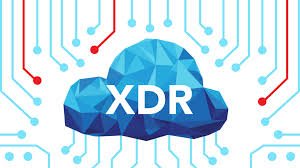Post Preview
Table of Contents:
- What is XDR?
- Key Features of XDR
- The Importance of XDR in Modern Cybersecurity
- How XDR Differs from Traditional Security Measures
- Benefits of Adopting XDR
- Future Trends in Cybersecurity Involving XDR
- Conclusion and Final Thoughts
What is XDR?
Extended Detection and Response, commonly known as XDR, is an advanced cybersecurity approach that aims to unify multiple security products into a cohesive and integrated system. This sophisticated solution provides enhanced visibility, analysis, and response to potential threats by combining data from various security sources. Unlike traditional security solutions that operate in silos, XDR seeks to correlate data across different platforms, allowing for a more thorough and nuanced analysis of potential threats. By combining multiple layers of security, XDR offers a holistic view of network activities, helping to identify and mitigate complex threats that might otherwise evade detection through isolated measures.
Key Features of XDR
XDR boasts several key features that set it apart from traditional cybersecurity measures. These features enhance its effectiveness and provide a comprehensive defense mechanism against a variety of cyber threats:
- Unified Threat Detection and Response: XDR integrates threat detection and response capabilities across multiple security products, creating a cohesive and robust defense system. This integration enables a more coordinated and effective response to threats.
- Automated Analysis and Correlation: By automating the analysis and correlation of data from various sources, XDR improves the accuracy and speed of threat detection processes. This automation enables security teams to identify threats and respond more efficiently and quickly.
- Centralized Management Console: A centralized management console allows for streamlined monitoring and management of all security activities. This centralization simplifies the process of tracking and responding to threats, making it easier for security teams to work efficiently.
- Enhanced Threat Intelligence: XDR leverages advanced intelligence to identify and mitigate even the most sophisticated cyber threats. By integrating threat intelligence, XDR can stay ahead of emerging threats and adapt its defenses accordingly.
The Importance of XDR in Modern Cybersecurity
The need for comprehensive and integrated cybersecurity solutions has never been more critical in the current landscape of rapidly increasing cyber threats. Traditional security measures often need to be revised when addressing complex, multi-vector attacks that target different parts of an organization’s infrastructure. XDR fills these gaps by providing a coordinated response to such threats. This capability is crucial in mitigating risks and protecting sensitive data from breaches. By unifying threat detection and response across multiple domains, XDR significantly enhances an organization’s ability to maintain the integrity of its systems and guard against potential cyber-attacks. This multi-faceted approach improves security and boosts overall operational efficiency, reducing the time and resources needed to manage disparate security solutions.
How XDR Differs from Traditional Security Measures
XDR’s integrated approach distinguishes it from conventional security measures, which often operate in isolation and are limited in correlating data across different platforms. Traditional security tools might detect a threat in one part of the network but fail to recognize related activities occurring elsewhere. This lack of integration can result in incomplete threat detection and delayed response times. On the other hand, XDR collects and analyzes data from multiple sources, providing a comprehensive and unified view of threat activities across the entire network. This holistic strategy allows for more accurate detection of multi-vector threats and enables faster, more effective responses. By breaking down silos and enabling seamless communication between security products, XDR offers a level of protection and insight that traditional methods cannot match. Moreover, the centralized nature of XDR’s management console ensures that all security operations are orchestrated cohesively, further enhancing the overall security posture of an organization.
Benefits of Adopting XDR
Adopting XDR in an organization’s cybersecurity framework brings numerous benefits, ranging from operational efficiencies to enhanced threat detection capabilities. One of the primary advantages is streamlining security operations, which reduces the complexity and time required to manage multiple security tools. Improved threat detection is another significant benefit, as XDR’s integrated approach enables more accurate and faster identification of threats. According to a recent study, businesses using XDR reported a 40% reduction in threat detection and response times. This efficiency boost enhances security and frees up valuable resources that can be allocated to other critical areas within the organization. XDR also facilitates more effective threat hunting, as its automated analysis capabilities allow security teams to search for potential threats proactively before they can cause damage. Furthermore, the centralized management of XDR simplifies the process of compliance reporting and incident management, making it easier for organizations to adhere to industry regulations and standards.
Future Trends in Cybersecurity Involving XDR
The future of cybersecurity is poised to be significantly influenced by advancements in XDR technology. One of the critical trends involves the integration of artificial intelligence (AI) and machine learning into XDR platforms. As discussed in this article, AI and machine learning can significantly enhance the analytical capabilities of XDR, offering more sophisticated threat detection and more precise responses. Another emerging trend is the automation of threat response processes. Automated systems can react to threats faster than human intervention, reducing the potential impact of cyber-attacks. These developments suggest that XDR will continue to evolve, offering even more robust and effective security solutions in the future. Additionally, as the cybersecurity landscape changes, XDR systems will likely incorporate advanced behavioral analytics and predictive modeling to anticipate and counteract potential threats before they materialize. By staying abreast of these trends, organizations can ensure that their cybersecurity strategies remain effective and resilient in the face of emerging challenges.
Conclusion and Final Thoughts
As cyber threats evolve and become more sophisticated, organizations must adapt their defense strategies accordingly. Integrating XDR into the cybersecurity framework represents a forward-thinking approach that offers robust protection and rapid response capabilities. XDR’s unified, integrated approach enhances an organization’s ability to detect and respond to threats, streamlines security operations, and improves overall cybersecurity posture. Organizations looking to bolster their security measures would do well to consider the numerous benefits of XDR, from its ability to provide comprehensive threat detection and response to its potential for operational efficiency. By adopting XDR, companies can stay ahead in the ever-changing landscape of cyber threats, ensuring that they are well-equipped to protect their sensitive data and maintain the integrity of their systems. As XDR technology advances, it will undoubtedly play a crucial role in shaping the future of cybersecurity, offering even more sophisticated and practical solutions to combat emerging threats.



